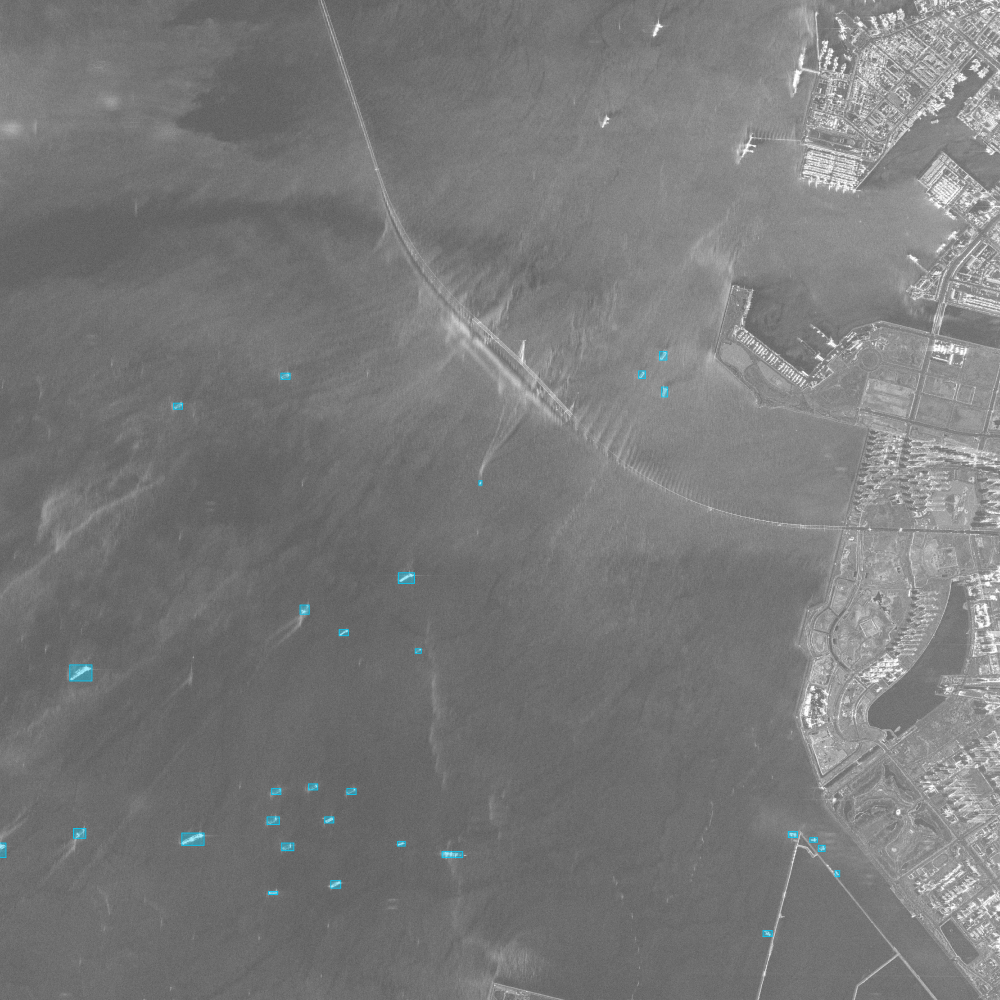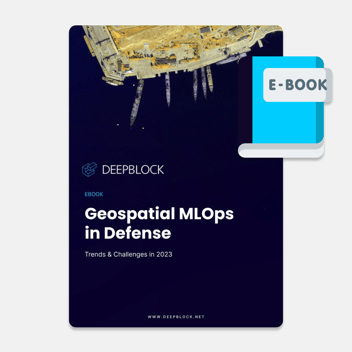How AI can help overcome SAR imagery analysis challenges.

Synthetic Aperture Radar (SAR) is a technology used for remote sensing that has revolutionized the way we observe the Earth's surface. SAR is a type of radar that uses radio waves to create high-resolution images of the Earth's surface. Unlike optical remote sensing, which relies on visible and infrared light, SAR is an active form of remote sensing that can penetrate clouds, vegetation, and other obstacles, allowing for observations of the Earth's surface day or night, in all weather conditions.
While SAR technology undoubtedly offers numerous advantages, it is not without its own set of inconveniences. Geospatial MLOps has demonstrated its prowess in training and deploying advanced geospatial models for remote sensing imagery and has the potential to mitigate certain processing and analysis obstacles encountered with SAR imagery.
The growing use of SAR.
The history of SAR goes back to the early 1950s when researchers began to experiment with using radar for remote sensing. In 1954, the US Air Force launched the first experimental SAR system, called SAMSON (Synthetic Aperture Missile Seeker Observation Network). SAMSON was designed to track missiles, but it also provided the first demonstration of SAR's ability to create high-resolution images of the Earth's surface.
In the following years, SAR technology was developed further, and in the 1970s, the first SAR imaging satellites were launched. The Seasat satellite, launched by NASA in 1978, was the first satellite to carry a SAR instrument, and it provided the first global images of the Earth's oceans using SAR. In the 1980s, SAR imaging satellites became more common, and today there are many SAR missions worldwide.
Today, there are different types of SAR that can be used depending on the application. The most common types of SAR are:
- Stripmap SAR - provides high-resolution imagery of a narrow strip of land.
- Spotlight SAR - provides very high-resolution imagery of a small area.
- ScanSAR - provides wide-area coverage with lower resolution.
In recent years, SAR technology has continued to evolve, with the development of new instruments and processing techniques. SAR has also become an important tool for many different domains:
- Environmental Monitoring: SAR technology has proven to be extremely useful in environmental monitoring applications. One example of this is the monitoring of sea ice in the Arctic to track changes in the ice cover over time. These images can also be used to identify areas of thin ice, which can be hazardous for ships. Another example of environmental monitoring is the use of SAR to map and monitor wetlands. SAR can penetrate through vegetation and provide high-resolution images of wetland areas, which can be used to monitor changes in water levels, vegetation growth, and land use.
- Disaster Management: In the aftermath of a natural disaster, SAR can be used to create high-resolution images of affected areas, which can be used to identify areas of damage and prioritize rescue and recovery efforts. SAR can also be used to create maps of flooded areas, which can be used to assess the extent of the damage and plan relief efforts. Additionally, SAR can be used to monitor landslides, which can help prevent disasters before they occur.
- Military Surveillance: SAR technology has a long history of use in military applications. SAR can be used to detect and track vehicles and aircraft, even in adverse weather conditions and darkness. This makes it an extremely valuable tool for military surveillance and intelligence gathering. SAR can also be used to create high-resolution images of military installations, which can be used to identify potential threats and plan military operations.
- Agriculture: SAR can be used to monitor agricultural crops, providing valuable information to farmers and land managers. SAR can be used to monitor soil moisture levels, which can help optimize irrigation and prevent water wastage. SAR can also be used to map and monitor crop growth, which can help identify areas of poor growth or damage. This information can be used to adjust fertilizer and pesticide application rates, resulting in higher crop yields.
- Oil and Gas: SAR technology can be used to monitor oil and gas pipelines, providing valuable information to pipeline operators. SAR can be used to detect changes in the ground surface, which can indicate pipeline leaks or other problems. SAR can also be used to monitor offshore oil rigs, providing valuable information on oil spillages and environmental impacts.
The challenges of using SAR imagery analysis.
SAR imagery is a powerful remote sensing technology that provides unique capabilities for imaging the Earth's surface. However, SAR technology also provides many challenges that need to be overcome.
- Data complexity: SAR data is complex and includes multiple dimensions such as time, polarization, and frequency. These critical parameters can affect the resolution of the image, sensitivity to different surface features and penetration depth. This complexity makes it challenging to interpret the data and extract meaningful insights.
- Atmospheric effects: Atmospheric conditions can significantly degrade the quality of SAR imagery, making it challenging to extract meaningful information accurately. Some of the most detrimental atmospheric effects for SAR imagery analysis include atmospheric attenuation, ionospheric disturbances, and tropospheric distortions. These effects can lead to signal loss, reduced image quality, ghosting and blurring.
- Image interpretation: SAR imagery is notoriously difficult to interpret due to its complex nature: signal noise, speckle, signal distortion, grayscale, scattering effect… It requires specialized training and expertise to interpret.
- Computational requirements: SAR imagery analysis is computationally intensive and requires significant computing resources to process and analyze the large amounts of data generated by SAR instruments. As seen above, SAR imagery is also affected by various types of noise and distortion, which can reduce image quality and require additional processing to correct.
Artificial intelligence has the potential to address the challenges associated with SAR data processing and analysis. AI techniques, such as machine learning and deep learning, can be used to extract valuable information from SAR data automatically.
- AI can provide automated classifications of objects and features on the ground, which can save time and reduce the risk of errors in interpretation. AI algorithms can be trained to recognize specific features, such as roads, buildings, vegetation, and water bodies, which can be useful for various applications, including urban planning, disaster response, and military surveillance. AI algorithms can be trained to detect changes in land cover or identify objects of interest in SAR images, such as vessels, aircrafts, and vehicles.
- AI can also help to improve SAR data quality by correcting for signal distortions and atmospheric interference, helping reduce noise and distortion in the SAR imagery, enhancing the image quality and improving the interpretation process. After training AI models on large datasets of SAR data, they can provide automated corrections to enhance the image quality by applying appropriate corrections automatically.
- AI can also support the use of cloud-based computing resources, which can provide additional computational power and scalability for SAR imagery analysis. Cloud-based computing resources can be used to process large amounts of SAR imagery data quickly and efficiently, enabling real-time analysis and decision-making.
The benefits of Geospatial MLOps for SAR model training.
Geospatial MLOps is the intersection of two fields: geospatial technology and MLOps (machine learning operation). Geospatial MLOps platform such as Deep Block enables data scientists, computer vision engineers, and GIS analysts to train and deploy cutting-edge geospatial models. Their accuracy and efficiency are transforming the way many organizations approach geospatial data analysis. By automating the process of analyzing, processing, and visualizing location data, analysts can now streamline the identification of patterns, trends, and anomalies in geospatial data, providing a level of accuracy and insight that was previously impossible.
MLOps present the most benefits when it comes to training AI models. It is a set of best practices and techniques used to manage the entire machine learning lifecycle, from data preparation and model training to deployment and monitoring. MLOps is particularly well-suited for training SAR imagery analysis models because it provides a comprehensive framework for managing the complexity and variability of SAR data.
- MLOps emphasizes reproducibility and traceability throughout the machine learning lifecycle. This means that every step of the process, from data preparation to model training to deployment, is documented and tracked, allowing for greater transparency and accountability. This is particularly important in SAR imagery analysis, where the quality and accuracy of the data can have a significant impact on the performance of the model.
- MLOps provides a standardized approach to managing the diverse range of tools and technologies used in machine learning. This includes data management tools, model training frameworks, and deployment environments. By standardizing these components, MLOps makes it easier to manage the complexity of SAR imagery analysis models and ensure that they can be easily replicated and scaled as needed.
MLOps is an iterative and collaborative approach to machine learning that emphasizes continuous improvement and feedback. This is particularly valuable in SAR imagery analysis, where the quality and accuracy of the data can change over time due to changes in the environment or other factors. By continually monitoring and updating the model, MLOps ensures that it remains effective and relevant in the face of changing conditions.





